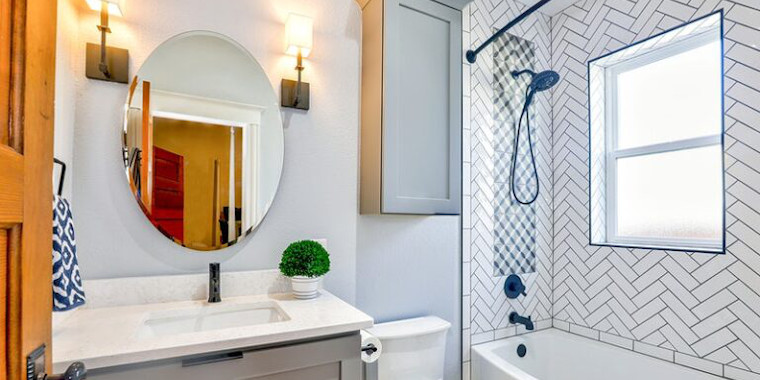Choosing the wrong tile adhesive can spell disaster for your tiling project – here’s what the experts want you to know
Understanding Tile Adhesives: The Foundation of Perfect Tiling
When it comes to tiling, the adhesive you choose is just as crucial as the tiles themselves. A proper understanding of tile adhesives is essential for ensuring your tiling project stands the test of time. According to recent industry statistics, over 65% of tiling failures are attributed to incorrect adhesive selection or application. The right adhesive not only secures your tiles firmly in place but also provides protection against moisture, temperature changes, and daily wear and tear. Several key factors influence adhesive selection, including the installation environment, tile material and size, and substrate conditions.
- Installation location (walls, floors, wet areas)
- Tile material (ceramic, porcelain, natural stone)
- Tile size and weight
- Substrate type and condition
- Environmental factors (temperature, humidity)
Thinset Mortar: The Professional’s Choice
Thinset mortar remains the most widely used tile adhesive in the UK, with over 80% of professional installations utilizing this versatile option. This cement-based adhesive creates an exceptionally strong bond and offers superior moisture resistance, making it ideal for both indoor and outdoor applications. Modern thinset comes in two primary varieties: unmodified and polymer-modified. Polymer-modified thinset, which now accounts for 70% of all thinset sales, offers enhanced flexibility and adhesion properties, making it particularly suitable for large-format tiles and challenging installations. The addition of polymers improves water resistance and reduces the risk of cracking, making it worth the approximately 15-20% higher cost compared to unmodified versions.
Pre-mixed Mastic Adhesive: Convenience vs. Limitations
Pre-mixed mastic adhesives have gained popularity in recent years, particularly among DIY enthusiasts, with sales increasing by 25% in the past two years. These ready-to-use adhesives offer unmatched convenience for wall tile installations and backsplashes. However, it’s crucial to understand their limitations. Mastic adhesives are not suitable for wet areas or floor installations due to their water-sensitivity and lower strength compared to cement-based options. They work best with smaller tiles (typically under 200mm x 200mm) and in dry areas only.
- Ideal for kitchen backsplashes and dry wall areas
- Perfect for small ceramic tiles
- Quick and easy to use with no mixing required
- Not suitable for wet areas or floors
- Limited to smaller tile formats
Epoxy Mortar: Maximum Strength and Durability
Epoxy mortar represents the premium end of tile adhesives, offering unmatched strength and chemical resistance. While accounting for only 5% of the UK adhesive market, its use is growing at 15% annually, particularly in commercial and high-end residential projects. This two-component adhesive creates a virtually waterproof bond and provides excellent resistance to chemicals, making it ideal for laboratories, industrial kitchens, and swimming pools. Despite its superior properties, the higher cost (typically 3-4 times that of standard thinset) and more complex application process mean it’s usually reserved for specific applications where its unique properties are essential.
Choosing the Right Adhesive for Your Project
Selecting the appropriate adhesive requires careful consideration of multiple factors. Recent industry data shows that 40% of tiling projects require some form of remedial work within five years due to incorrect adhesive selection. To help you make the right choice, consider the following framework:
- For floor tiles: Use cement-based thinset mortar
- For wall tiles in dry areas: Pre-mixed mastic or thinset
- For wet areas: Polymer-modified thinset or epoxy
- For large format tiles: Polymer-modified thinset
- For glass or mosaic tiles: White polymer-modified thinset or specific glass tile adhesive
Special Applications and Considerations
Different tile materials and installation scenarios require specific adhesive considerations. Natural stone tiles, for instance, need white adhesives to prevent staining, while glass tiles require adhesives with enhanced flexibility and bond strength. Large format tiles, which have seen a 35% increase in popularity over the past year, demand highly modified thinset mortars with extended open times and superior non-slip properties. Understanding these special requirements is crucial for achieving optimal results.
Modern Innovations in Tile Adhesives
The tile adhesive market has seen significant innovations in recent years, with manufacturers focusing on sustainability and performance. Eco-friendly options now make up 25% of new product launches, featuring reduced carbon footprints and lower VOC emissions. Fast-setting varieties have also gained traction, allowing for grouting within 3-4 hours compared to the traditional 24-hour wait time. These rapid-setting products now account for 30% of professional installations where time is a critical factor.
Essential Tips for Successful Adhesive Application
- Always prepare surfaces thoroughly, ensuring they are clean, dry, and stable
- Use appropriate tools including the correct notched trowel size
- Mix powder adhesives strictly according to manufacturer instructions
- Work within the adhesive’s open time
- Ensure minimum 80% coverage for walls and 95% for floors
- Consider temperature and humidity during installation
- Allow proper curing time before grouting
Making Your Final Choice
When making your final adhesive selection, consider the long-term implications of your choice. While premium options might seem costly initially, they often prove more economical over time by preventing failures and extending installation life. Remember that proper installation is just as important as product selection. For complex projects or when in doubt, consulting with professional tilers can save significant time and money in the long run. At Bromley Tilers, we’re always happy to provide expert advice on adhesive selection and proper installation techniques to ensure your tiling project’s success.
FAQ
How much depth should I allow for tile adhesive?
As a general rule for which size trowel to use, follow this generic banding: Mosaics (10x10cm or smaller) – 3-4.5mm. Large format tiles (20×20-30x30cm) – 8mm.
Is ready mix tile adhesive any good?
While ready-mixed adhesives (e.g. BAL White Star Plus) are perfect for fixing 300x300mm ceramic tiles or metros, at BAL we would never recommend using such a product when using porcelain tiles over 100mm x 100mm, large-format tiles and tiling floors.
What’s the difference between S1 and S2 tile adhesive?
S1 adhesives are the industry standard tile adhesives for flooring as they have flexibility and strong support for your tiles. S2 = This indicates that the product is a Highly Deformable adhesive.
How to choose the right tile adhesive?
Small ceramic tiles are often used for walls and splashbacks and in most cases, a ready-mixed paste will be suitable for the job. If you’re fixing a larger ceramic tile (larger than 30 x 30 cm) or any size porcelain tile to your walls, you will need to use a powdered adhesive.
What helps peel and stick tiles stick better?
Apply Firm Pressure To make a lasting impression, once the tile is in place, press firmly to really activate the adhesive. Using a heavy vinyl floor roller (or some sliding dance move action) will help ensure even contact with the floor, preventing lifting or slipping.
Sources
[1] https://www.reddevil.com/products/product/tile-paste-adhesive-squeeze-tube-5-5-fl-oz-squeeze-tube-white
[2] https://www.amcork.com/products/liquid-nails-fuze-it-adhesive
[3] https://www.downrighttile.com/blog/which-tile-adhesive-should-you-use-for-your-tiling



